What do you think about an exhibition about maritime tattoos, Molly Carrott Taylor, Director of the Ships of the Sea Maritime Museum, asked me nearly two years ago.
My answer became Sea of Ink: Savannah Maritime Tattoos, a photographic exploration of maritime and nautical tattoos in our community. Historic references contextualize the presentation, but photographs of contemporary people who live and work nearby tell the story.
Divided into two sections—tattoo collectors (people with tattoos) and tattoo artists (people who give tattoos and have tattoos)—Sea of Ink brings to the fore the modern-day version of a centuries-old tradition. Tattoos no longer harbor taboos of yore (mostly), but the culture still carries elements of mystery, intrigue, and ritualism.
We found our tattoo subjects in a variety of places, from people we knew to friends-of-friends to people who answered open calls to strangers we passed on the street and in restaurants, grocery stores, etc. Our enthusiastic inquiries put off a few people, but most tattoo collectors and artists welcomed our questions, and many ended up in the exhibition.
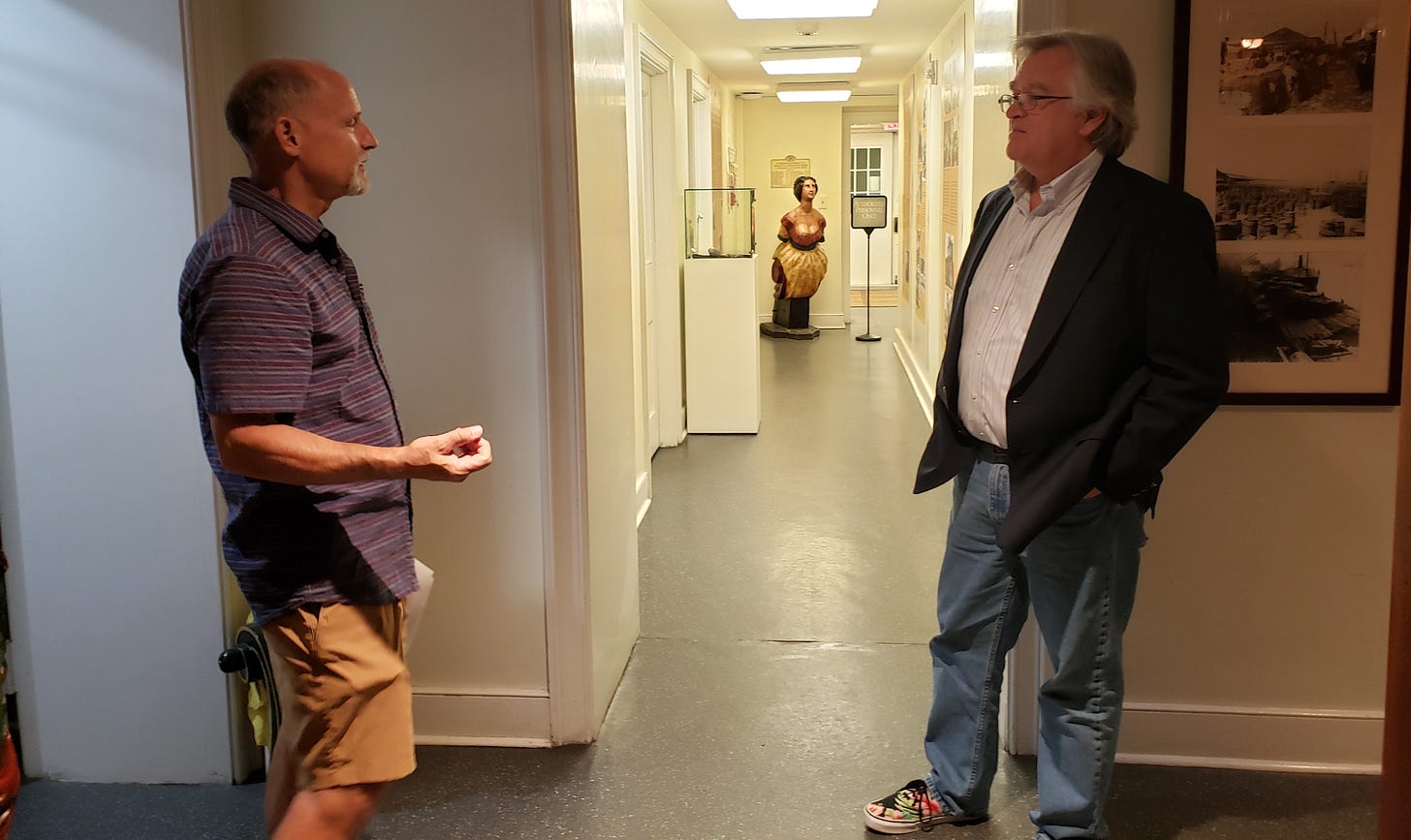
Most tattoo collectors were quite open about their tattoo stories, and I was amazed with how comfortable they were about their bodies as they rolled up their sleeves and pant legs, unbuttoned and/or pulled up or off their shirts to reveal tattoos.
Many tattoo artists were also forthcoming in discussing their work, a profession that can be quite grueling. Tattooers must juggle artistic vision, technique, knowledge of proper cleaning and machine use, business practices, and customer service. They also serve as lay therapists, listening to their customers share stories about loved ones, hopes and dreams, both actualized and dashed, as they create art on someone’s body.
I chose two photographers—Tom Sanders and Mike Schalk—to bring Sea of Ink to life. Both photographers take different approaches to their work, which is reflected in their portraits on display in the exhibition. Their subjects’ unique personalities come through in the individual portraits they created. Simultaneously, their works made a cohesive statement.
For example, Tom creates drama in his photography by manipulating light and layering images. In Sea of Ink, he continues to play with these methods by digitally adding details of paintings from the museum’s collection as backdrops to his photographs of tattoo collectors.
Conversely, Mike captures scenes. He contorts his body to find the right shot. He lies on the floor, squats, and folds his legs in funny ways. His particular approach to photographic storytelling lent itself to recording tattoo artists in their workspaces. Rather than focusing on his subject’s faces, Mike’s portraits reveal an artist’s individual complexity as reflected in their surroundings.
Curatorially speaking, I made several choices to accentuate each component of the exhibition. On the museum’s first floor, portraits of the tattoo collectors are hung in a salon style format, creating a wall of people. One glance tells a story of Savannah, of humanity, of tattooing, of life. Further viewing reveals more. In most of the images, for example, the collector looks boldly at the viewer as if in dialogue, perhaps saying: “I see you see me.”
Opposite the portrait wall, a cast net donated by Captain Nick, a fisherman based on Tybee Island and featured in the exhibition, holds detailed images of Savannah collectors’ tattoos. Displayed like captured flotsam and jetsam, the presentation reels in viewers as they discover sea-related artistry depicted on photos of tattooed human skin.
On the second floor, framed portraits of fourteen Savannah-based tattoo artists represent decades of artistic mastery and practice, as well as a booming city business. A soundscape featuring music and sound one might hear in a tattoo shop plays in the background. Created by artist Jimmy Butcher, the piece includes buzzing of tattoo machines, voices of iconic tattooers Philadelphia Eddie and Bowery Stan Moskowitz, as well as a variety of music styles. Videos of tattoo collectors and artists discussing their tattoos and work add an additional layer to the exhibition’s storytelling.
On September 19, 2024, Ships of the Sea Maritime Museum opened Sea of Ink: Savannah Maritime Tattoos to a crowd of more than 600 people. We knew people would love the exhibition, but we didn’t anticipate how much. Due to popular demand, the museum decided to extend the exhibition through summer 2025. If you haven’t seen it, there is still time.


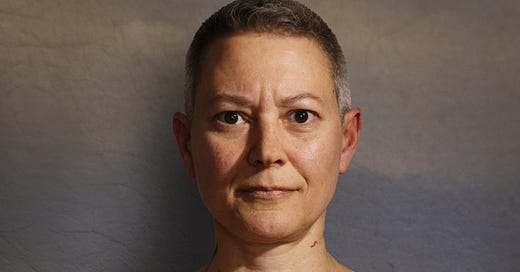



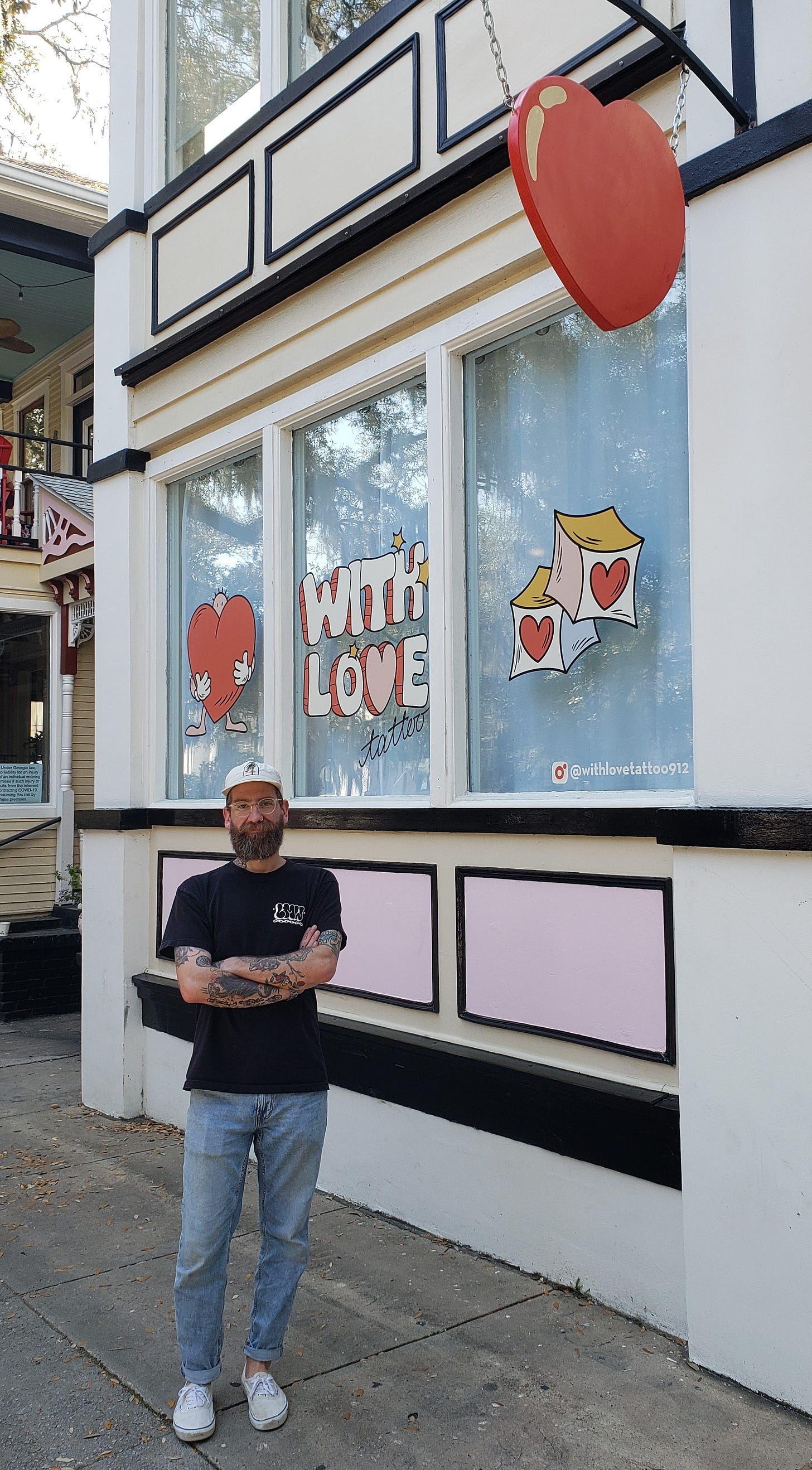

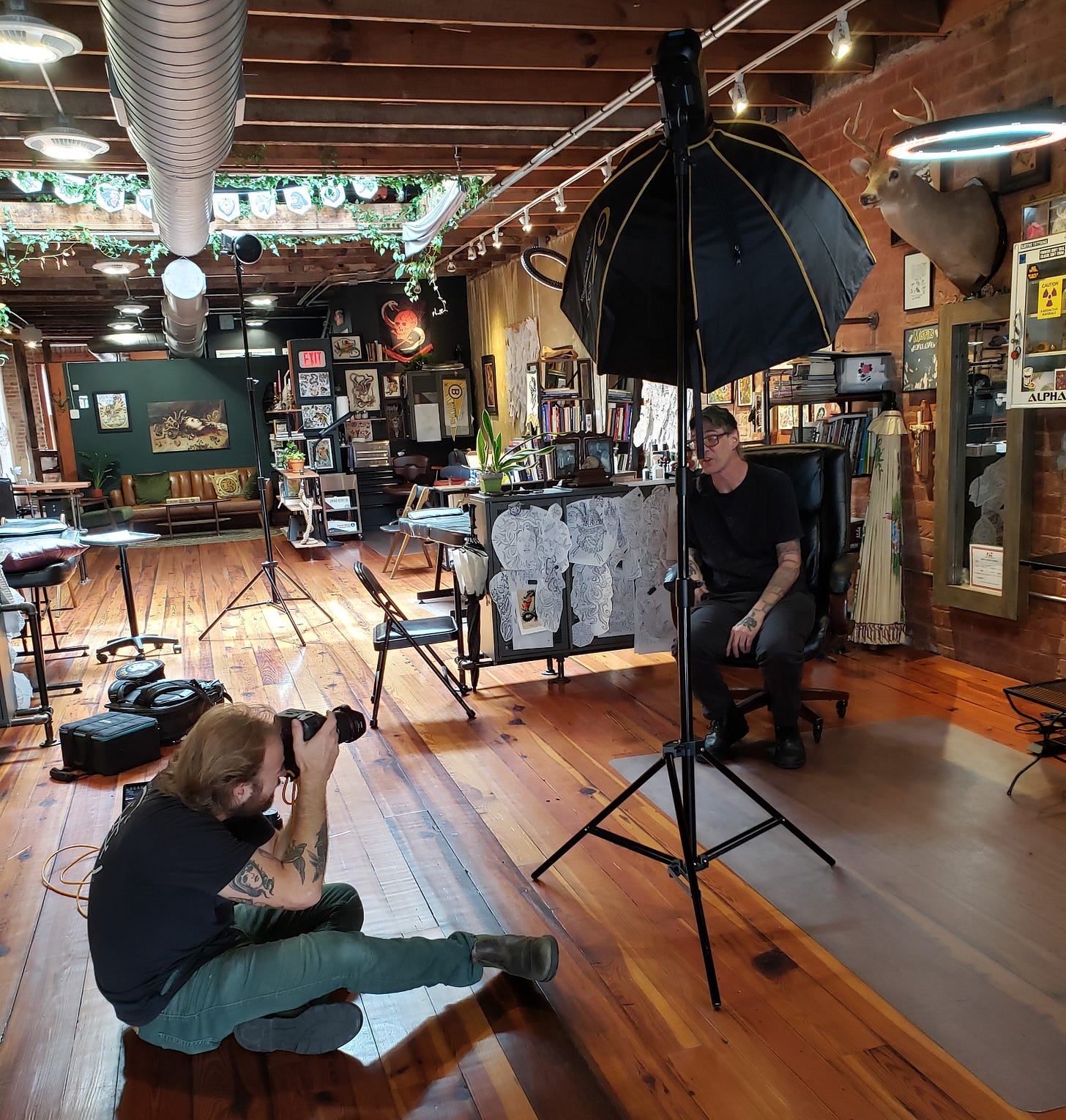
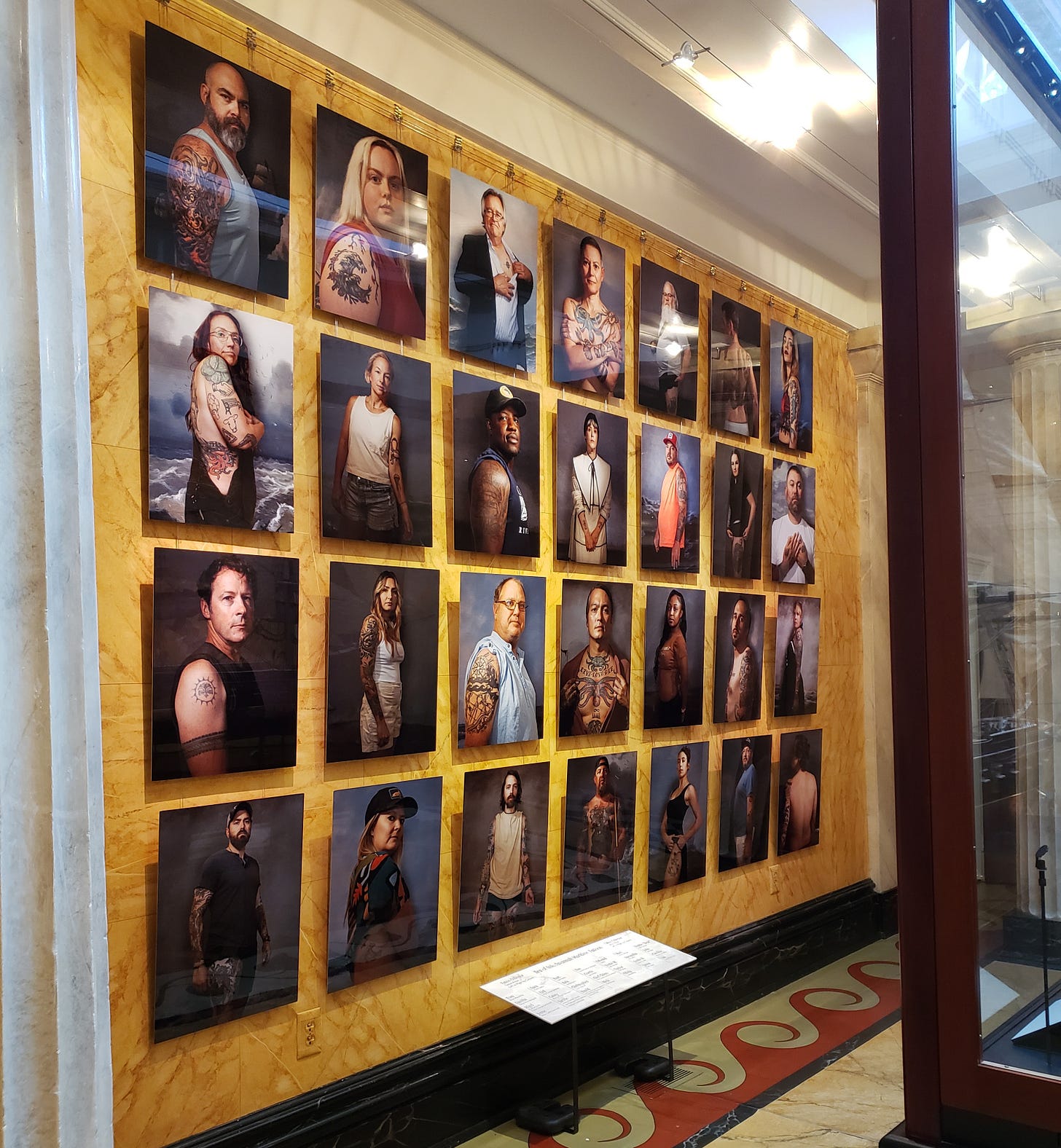


What an engaging exhibition Sea of Ink is. Great write up and curation, Tania